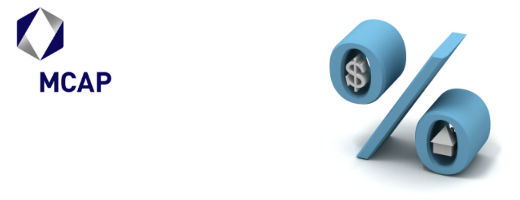Article courtesy of MCAP.
“If you start saving early in life, the power of compound interest will allow you to retire comfortably.” This is what financial planners tell young Canadians. And it’s true. But what is compound interest? The most basic definition is that compound interest is interest on interest. If you have an RRSP, compound interest is your best friend because the interest (or other income) you earn on your investments within your plan is also invested (rather than paid out to you) and these earnings are put to work for you, thereby “compounding” your return. The earlier you start saving for retirement, the more compound interest will work for you.
As a borrower who pays compound interest on a loan or a mortgage, the definition doesn’t change – it’s still interest on interest – but compound interest on a loan means that you will pay a little more interest than you would if your loan was a simple interest loan.
Interest on fixed rate mortgages in Canada is, by law, “compounded semi-annually not in advance”. Let’s use an example to break down this term and see what it really means. Our mortgage borrower, Barry, has a $200,000 fixed rate mortgage at 6%. If it was a simple interest mortgage, Barry’s annual interest would be $12,000. But Barry’s mortgage interest is compounded which means that interest which accrues (or accumulates) is added to the principal and included in future interest calculations. The “semi-annually” part refers to how often this happens – in this case, every six months. Assuming for the moment that Barry makes no payments, his balance when he first takes out the mortgage is $200,000. After six months, the accrued interest is $6,000. This is then added to the original principal for purposes of calculating Barry’s interest for the next six months – $206,000 at 6% for six months which is $6,180. After one year, Barry’s balance is $212,180 and his interest for the following six months is $6,365. This “compounding” effect continues every six months – or semi-annually. Just like saving for retirement (except in reverse), the power of compound interest increases as more time goes by.
Let’s look at what “not in advance” means. In the example above, the accrued interest is added to the principal after it has accrued – rather than before it has accrued. If accrued interest was added to the principal balance before it had accrued – or at the beginning of a six month period – Barry would be paying interest calculated semi-annually “in advance”. The term “not in advance” implies that there are mortgages or loans which compound interest “in advance” but really, there are not. “Not in advance” is a standard legal term which is used for clarity only.
We have seen how compounding works when Barry makes no payments on his mortgage. Let’s say that Barry is a typical Canadian borrower who makes monthly blended payments of principal and interest on a 25 year amortization schedule. The arithmetic becomes a little more complicated because allowance must be made not only for compounding interest every six months, but for Barry’s monthly payments as well. When the compounding frequency is different from the payment frequency (and it almost always is because lenders generally do not offer an option to make mortgage payments every six months), a mathematical conversion to a “monthly” interest rate must be made for purposes of calculating payment amounts.
We have all seen references to the terms “Annual Percentage Rate” (APR) or “Annual Effective Rate” (AER) in Cost of Borrowing disclosure sections of mortgage documents. These terms refer to the conversion of the mortgage rate (6% for Barry) compounded semi-annually to a simple annual interest rate. In Barry’s case, his 6% mortgage has an APR of 6.09%. The effect of compounding adds .09% to Barry’s quoted rate when expressed in simple interest terms. To calculate Barry’s monthly mortgage payments, his lender will convert his rate to a monthly compounding rate which also has an APR of 6.09%. This rate is actually 5.926%. This conversion to a monthly rate is further evidence of the effect of compounding because both 5.926% compounded monthly and 6% compounded semi-annually have the same APR of 6.09%.
Most Canadians end up pulling their hair out if they try to figure out how their mortgage lender calculated their payment amounts. This is usually because they forget that two conversions are required – first, the mortgage rate is converted to an APR and then that APR is converted to a monthly (or bi-weekly, weekly etc. depending on the payment frequency chosen) compounded rate with the same APR.
Note from Tim: If all this sounds like a foreign language, just ask your favourite mortgage broker to explain it to you (of if you don’t even want to know, we can just take care of that stuff, too). 😉
